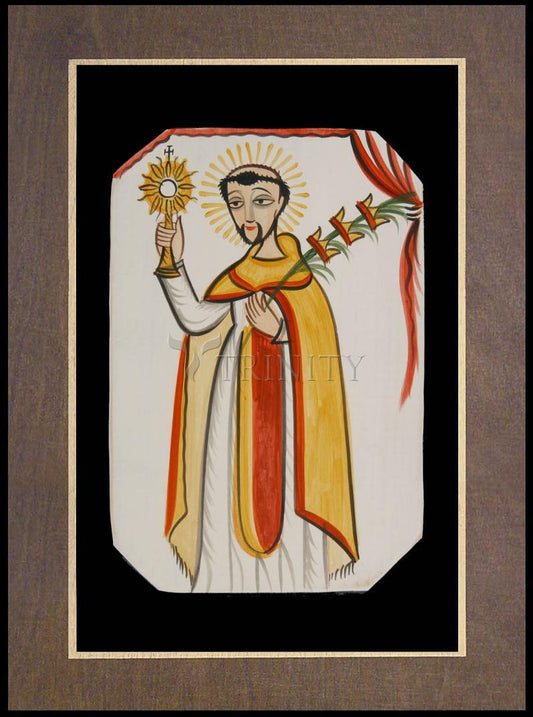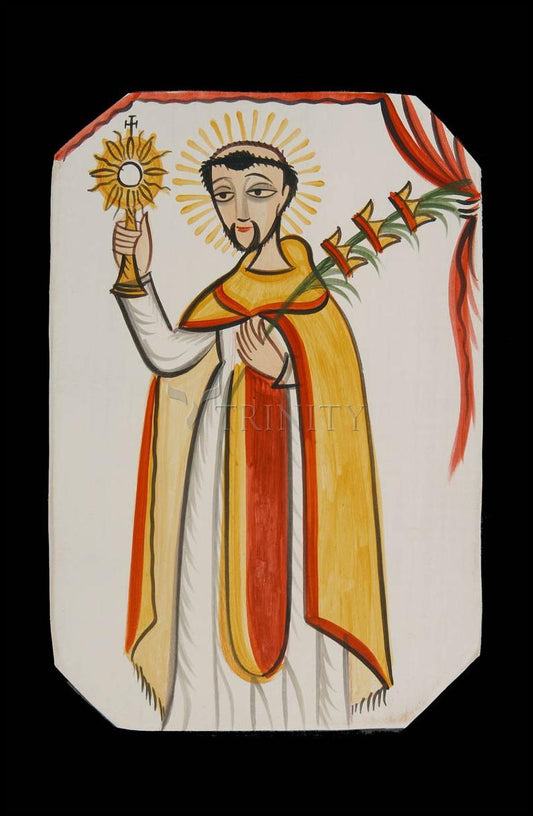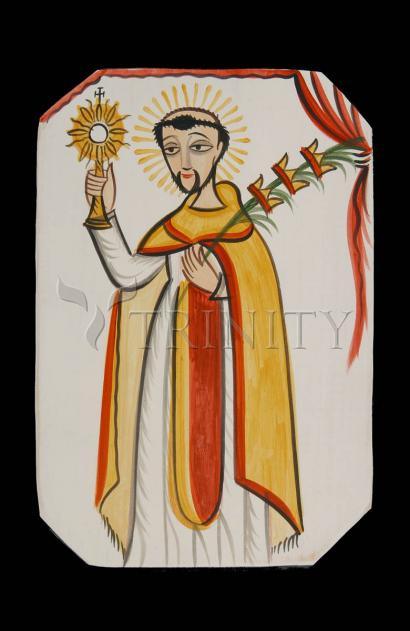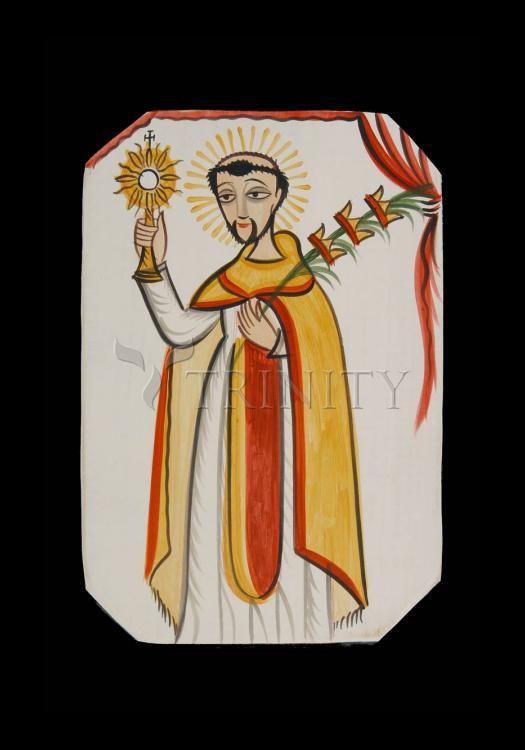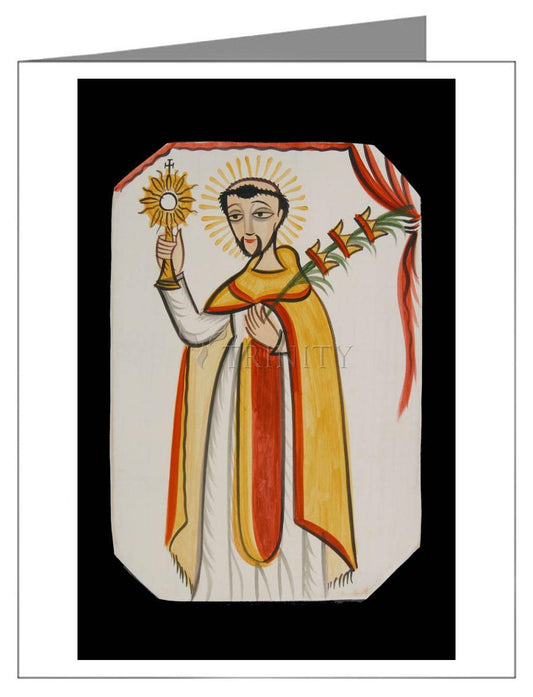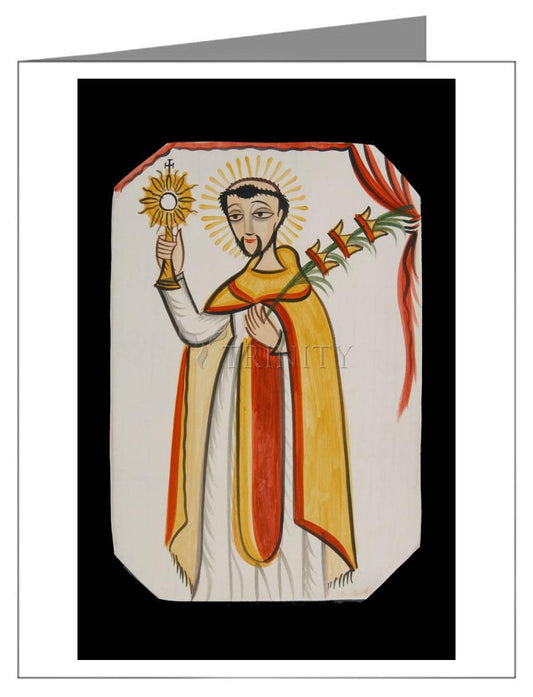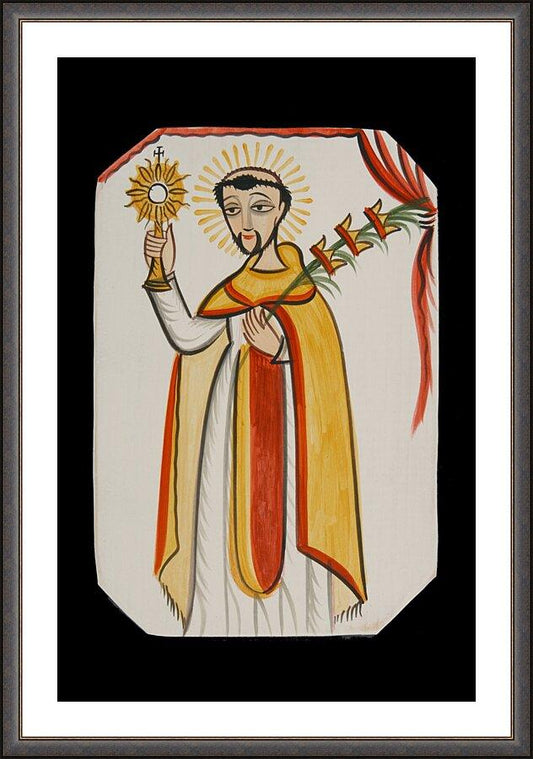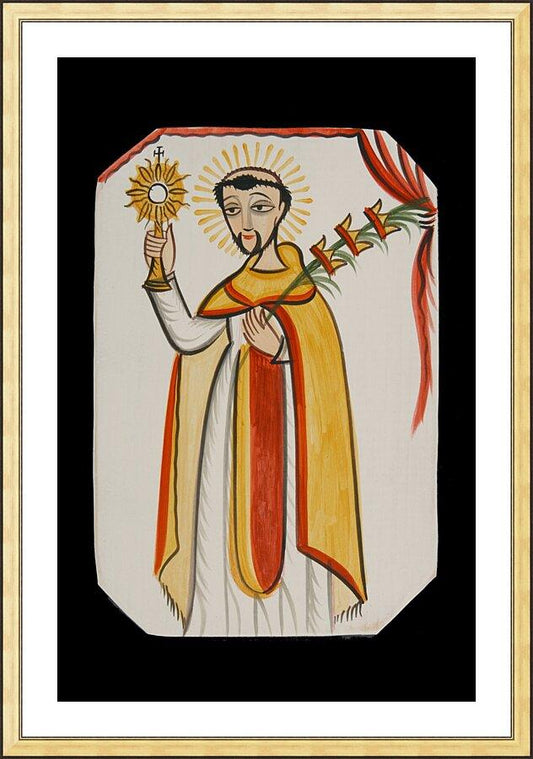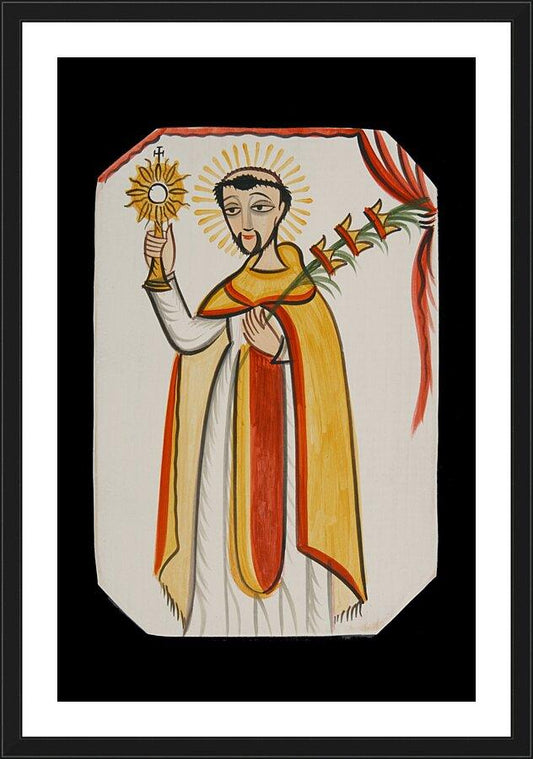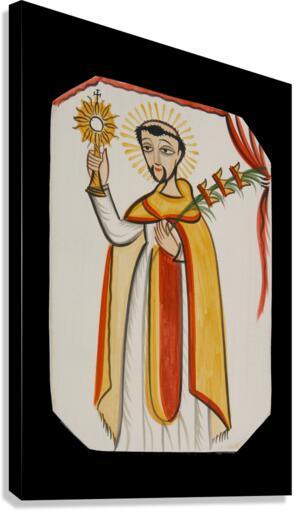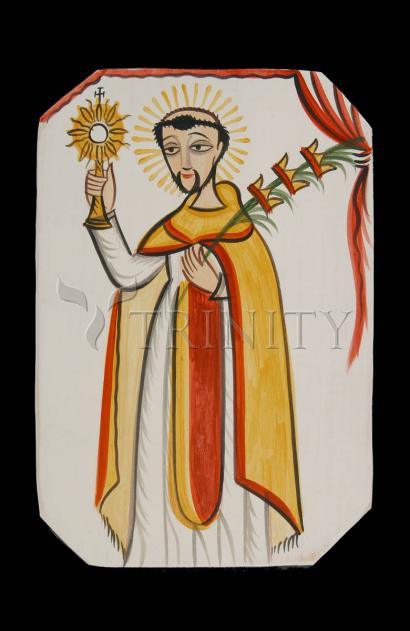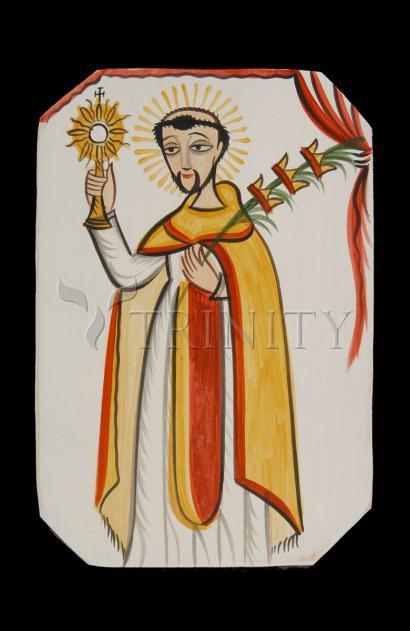Born 1200 or 1204 at Portello in the Diocese of Urgel in Catalonia; died at Cardona, 31 August, 1240. His feast is celebrated on 31 August. He is pictured in the habit of his order surrounded by ransomed slaves, with a padlock on his lips. He was taken from the womb of his mother after her death, hence his name. Of noble but poor family, he showed early traits of piety and great talent. His father ordered him to tend a farm, but later gave him permission to take the habit with the Mercedarians at Barcelona, at the hands of the founder, St. Peter Nolasco. Raymond made such progress in the religious life that he was soon considered worthy to succeed his master in the office of ransomer. He was sent to Algiers and liberated many captives. When money failed he gave himself as a hostage. He was zealous in teaching the Christian religion and made many converts, which embittered the Mohammedan authorities. Raymond was subjected to all kinds of indignities and cruelty, was made to run the gauntlet, and was at last sentenced to impalement. The hope of a greater sum of money as ransom caused the governor to commute the sentence into imprisonment. To prevent him from preaching for Christ, his lips were pierced with a red-hot iron and closed with a padlock. After his arrival in Spain, in 1239, he was made a cardinal by Gregory IX. In the next year he was called to Rome by the pope, but came only as far as Cardona, about six miles from Barcelona, where he died. His body was brought to the chapel of St. Nicholas near his old farm. In 1657 his name was placed in the Roman martyrology by Alexander VII. He is invoked by women in labor and by persons falsely accused. The appendix to the Roman ritual gives a formula for the blessing of water, in his honor, to be used by the sick, and another of candles.
Born: 1204 at Portella, diocese of Urgel, Catalonia, Spain
Died: August 31, 1240 at Cardona, Spain of a fever; buried at the chapel of Saint Nicholas near his family farm he was supposed to manage
Canonized: November 5, 1625 by Pope Urban VIII (cultus confirmed); 1657 by Pope Alexander VII (canonized)
Name Meaning: Not born (= non-natus) as he was delivered by ceasarian



